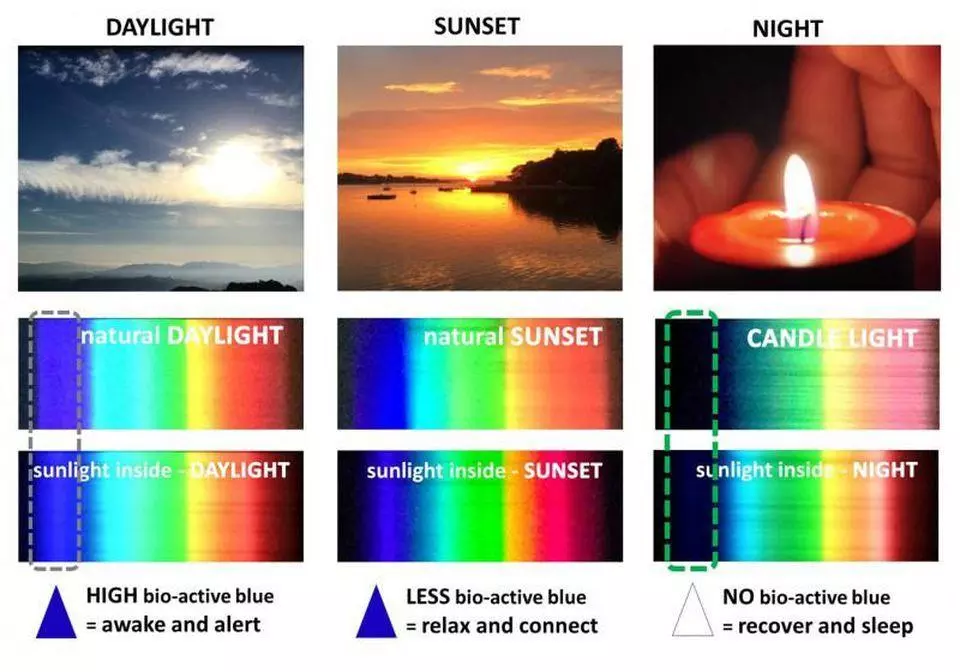Comments (2)
Martin Harrison
I found this very insightful, thank you.
Nigel Rose
Wow this was an eye-opener!

Technology offers new and interesting options for non-drug therapeutic interventions. From puffs of air to treat a migraine to electroceuticals, these options can offer new approaches to modulate and manages aspects of physiology. While well established in clinical practice, light continues to offer interesting opportunities for digital health. The story of light is really the story of life. From Genesis to photosynthesis, it's a fascinating and important story.
We live in light. Perhaps even more than an external aspect of life, light is inexorably connected with the human experience and with our physiology. Today, the ubiquity of light, perhaps as a function of our incandescent and "always on" society, may be having a direct impact on health and wellness. Even Apple, with the introduction of Night Shift, has acknowledged the potential impact of short-wave blue light on sleep and performance.
We have evolved with natural light. Until 100 years ago our days were filled with bright sunlight, and our evenings were lit with the soft warm glow of a flame. We are programmed to respond to the daily and seasonal variations of natural light. Unfortunately, most of us don’t get enough natural light during the day and get too much artificial light at night. Our bodies crave bright blue-rich light during the day to see and feel our best. We depend upon biological darkness at night (absence of blue light) to relax, recover and sleep. However, artificial light has been optimized for ‘the absence of darkness’ for visual tasks. The focus on energy efficiency leads to unnatural blue-green light and unhealthy indoor spaces with too little light during the day and too much light at night. Artificial light allows us to see, but does not support our emotional, aesthetic or physiological well-being.

Sunlight spectral composition varying over time. SUNLIGHT INSIDE
Natural light contains an even balance of all the colors of the spectrum, and changes with the time of day, time of year, and location on earth. In addition to the rods and cones we use to see, the human eye has a third class of photo-receptors called IPRGC (intrinsically photosensitive retinal ganglion cells) which sense the time of day and synchronize our hormone cycles. The bright blue-rich light of day tells our bodies to be awake and alert and allows us to see fine details and colors accurately. The softer warmer light of sunset and candlelight highlights skin tones and signals our bodies to relax, recover and sleep. Exposure to the daily cycles of natural light is critical for synchronizing the hormone cycles that regulate our energy, metabolism, mood, sleep and overall health and well-being.
Today's techno-illumination can directly disrupt these complex and critical circadian cycles and directly impact health. Sunlight Inside was founded to bring the emotional, aesthetic and physiological benefits of natural light back indoors. Sunlight Inside is the first company to make lights that automatically deliver sunlight during the day to boost your mood and energy and then switch to candle and firelight at night, which can make it easier to unwind and sleep. Sunlight Inside uses a new class of light sources, called light engines, which actively mix all the spectral colors to produce beautiful "appropriate-spectrum" natural light.
The natural light around us changes all the time and artificial light is static. As "artificial" and "all natural" have become critical terms in the lexicon of wellness, it might be time for light to become part of this distinction. The value of appropriate spectrum light as therapy and as prophylaxis is well established. It's time that both public awareness and retail options drive a choice for lighting that is more physiologically compatible to what nature designed.
I am the Founder of NOSTALAB -- a leading digital health think tank providing business and marketing insights to help the life science industry navigate the complex aspects of innovation in the context of exponential change. I help define, dissect and deliberate global trends in digital health as an active participant working with clinicians, innovators and patients.
Follow me @JohnNosta for an enlightening and unexpected view of the future.
A version of this article first appeared on Forbes.
I found this very insightful, thank you.
Wow this was an eye-opener!
John is the #1 global influencer in digital health and generally regarded as one of the top global strategic and creative thinkers in this important and expanding area. He is also one the most popular speakers around the globe presenting his vibrant and insightful perspective on the future of health innovation. His focus is on guiding companies, NGOs, and governments through the dynamics of exponential change in the health / tech marketplaces. He is also a member of the Google Health Advisory Board, pens HEALTH CRITICAL for Forbes--a top global blog on health & technology and THE DIGITAL SELF for Psychology Today—a leading blog focused on the digital transformation of humanity. He is also on the faculty of Exponential Medicine. John has an established reputation as a vocal advocate for strategic thinking and creativity. He has built his career on the “science of advertising,” a process where strategy and creativity work together for superior marketing. He has also been recognized for his ability to translate difficult medical and scientific concepts into material that can be more easily communicated to consumers, clinicians and scientists. Additionally, John has distinguished himself as a scientific thinker. Earlier in his career, John was a research associate at Harvard Medical School and has co-authored several papers with global thought-leaders in the field of cardiovascular physiology with a focus on acute myocardial infarction, ventricular arrhythmias and sudden cardiac death.
Leave your comments
Post comment as a guest